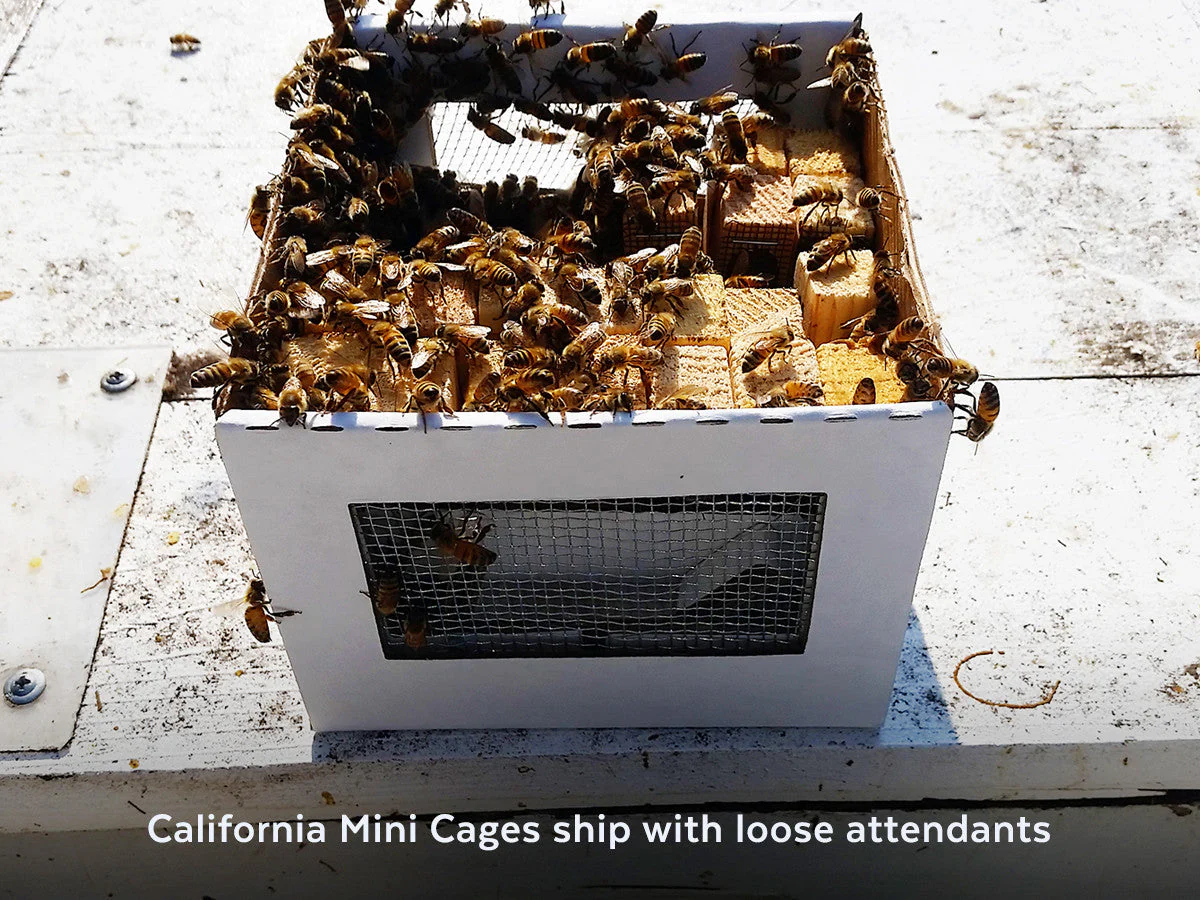The early bird gets the worm. Get ready for the coming season.
Golden West Honey Bee Queen
Golden West Honey Bee Queen
Couldn't load pickup availability
Re queening a beehive is practised every one to two years by beekeepers to quickly expand a bee yard for profitable beekeeping for the market and to strengthen existing apiculture colonies in the spring.
Fill your beehives for fruit, vegetable and seed agriculture pollination and to harvest honey, honeycomb, beeswax and royal jelly.
Golden West bees are meticulously bred to excel in essential traits for thriving bee colonies by Randy Oliver and his sons Eric and Ian, prioritizing gentleness as the hallmark characteristic, ensuring a harmonious beekeeping experience for handlers.
Randy Oliver and his sons run the successful migratory beekeeping operation Golden West Bees in the California foothills, taking their hives to almond pollination each year, and then crafting a thousand nucs each spring with only the best colonies returning from almond pollination considered for potential breeder qualification, without using any synthetic miticides since the year 2001. These elite colonies undergo rigorous selection criteria so the cream of the crop is grafted.
Unlike other breeding programs, Golden West queen bees are not selected based on colour or pattern looks as an indicator of genetic diversity. Breeding emphasis remains solely on performance and adaptability to various environments, from queens whose colonies are very gentle and healthy, exhibited above average honey production, and proved strong for almond pollination.
In addition to their gentle demeanor, selected Golden West queens exhibit unwavering strength and productivity, lead colonies with resilience and vigor, driving efficient honey production and robust brood rearing, ultimately contributing to thriving hive populations.
Golden West bees boast impressive mite resistance, a crucial attribute in modern beekeeping. Their ability to withstand the challenges posed by parasitic mites, such as Varroa destructor, underscores their resilience and longevity.
While monitoring their hives for mite infestation in 2017, Randy Oliver and his sons discovered a colony that maintained mite counts of zero, without any treatments. Sensing an opportunity to free their bees from the plague of varroa, Randy decided to begin a serious selective breeding program, starting with daughters grafted from that “Queen Zero.”
Each year they split and requeen all their 1500 hives, solely with daughters of queens that headed the previous season’s most mite-resistant colonies.
Starting with only a single resistant colony out of 1500, over the years they’ve slowly increased the percentage of their hives that exhibit complete or partial mite resistance. In the first years, heritability was frustratingly low, but by the 2023 season, in some yards over half their colonies maintained infestation rates below 2% over the entire course of the season, right in the middle of crowded apiaries with plenty of mite drift – without the application of any miticides.
Keep in mind that there’s no such thing as a mite-resistant queen – it’s the workers produced by the queen and the drones that she mated with that confer resistance. That said, the Olivers want to make clear that they have not yet “fixed” the genetics for mite resistance into their bloodlines, so they do not yet make any claim that their stock is “mite resistant.” But it looks like you’ve currently got about a 50% chance that any of their queens might produce a resistant colony – a figure that we expect to improve each year. Their “partially-resistant” colonies require fewer treatments like mite washes throughout the year.
Each queen bee lays up to 3000 eggs a day, 90 percent of which become bees.
Share










